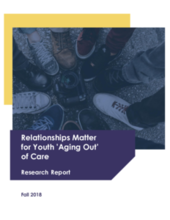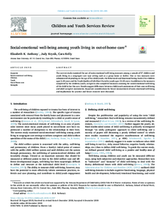Displaying 1261 - 1270 of 2503
This video shares the stories of two "grandfamilies" in the US and a new affordable housing program in Washington, DC designed to house grandparents raising their grandchildren.
The 'One Child, Many Hands: A Multidisciplinary Conference on Child Welfare' is issuing a Call for Presentations.
This article from the Tyee highlights a new report with recommendations for supporting foster youth in transitioning to independent living, which was co-researched by 8 youth from care and a a McGill University social work PhD student, Melanie Doucet.
This study identified children born to mothers in foster care and documented Child Protective Service (CPS) involvement among children.
While previous studies have focused on the effects of parental deportation on young children, this study uniquely contributes to the literature by exploring how adolescents experience and cope with a forced family separation.
While previous studies have focused on the effects of parental deportation on young children, this study uniquely contributes to the literature by exploring how adolescents experience and cope with a forced family separation.
This webinar will explore the US the nationally-adopted Standards of Quality for Family Strengthening & Support.
Relationships Matter for Youth 'Aging Out' of Care is a collaborative photovoice project led by Melanie Doucet, who is a former youth in care, alongside eight former youth in care between the ages of 19 and 29 from the Greater Vancouver area.
The purpose of this study is to explore child welfare workers' perspectives on ethnic matching in child welfare service delivery.
The current study examined the use of socio-emotional well-being measures among a sample of 57 children and youth living in a congregate care type setting such as a group home or shelter.


